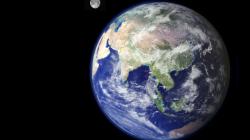Night and day addresses the AC Science Understanding ACSSU048 Earth’s rotation on its axis causes regular changes, including night and day, in the context of observing and modelling the movement of the sun, Earth and moon.
Explore our new sequences for Year 3 aligned to AC V9
Night and day provides students with hands-on opportunities to:
- explore the sizes, shapes, positions and movements of the sun, Earth and moon
- role-play the movements of the Earth in relation to the sun and moon
- explain night and day in terms of the Earth spinning on its axis
- inquire about shadows and light
Students apply their new learning by:
- investigating how shadows change throughout the day and linking these changes to the Earth’s movement around the sun
Linking science with literacy
In the Primary Connections approach, students are supported to create representations that draw on and strengthen their literacy development. In Night and day, students represent and explain their understanding about how Earth’s rotation on its axis causes regular changes, including night and day, by creating these representations:
- T-chart
- Annotated drawing
- Labelled diagram
- Role-play
- Data table
- Graph
- Word wall
This is a classic Primary Connections sequence aligned with the Australian Curriculum V8.4. It is only available as a downloadable package.
The Night and day sequence package includes all the resources you need to teach this sequence, including:
- The Night and day unit PDF
- Equipment list
- Australian Curriculum v8.4 alignment
- Student eResource sheets
- Assessment resources:
- Assessment rubrics
- Work samples
- Student self-assessment
- Achievement standard class checklist
Teacher tools
Our new all-online sequence Space innovators shares a curriculum content descriptor with this sequence. Space innovators is aligned to the Australian Curriculum V9 and contains embedded professional learning and supplementary teacher advice.
Space innovators
Students use scientific models to explore phenomena on Earth involving the relative position of the Sun and Moon, such as day and night, variable day length and the phases of the Moon. They explore the wider solar system and consider the scientific and technological innovations that have enabled humans to study space.

